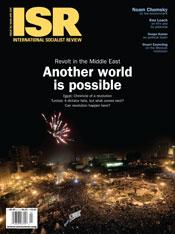The answer to 25 lies

American Indians:
THE DECADE had barely begun before Republican National Committee chairman Michael Steele used the slur “honest injun” in a conversation with Sean Hannity on Fox News—resurrecting a bigoted phrase that has its origins in the genocide of Native Americans.
For generations, both the history and life experiences of indigenous people in the United States have been profoundly distorted by racism and callous stereotypes. This racism certainly isn’t confined to boneheads like Michael Steele or those who like Indians as mascots for sports teams. Instead, it is constantly recycled throughout the mainstream media.
The Steele incident is just one reason why Devon A. Mihesuah can write in her book, American Indians: Stereotypes and Realities, “no other ethnic group in the U.S. has endured greater and more varied distortions of its cultural identity than American Indians.” From Chief Wahoo (the Cleveland Indians’ mascot) to the culturally inaccurate trinkets for sale at tourist stops, many people’s perceptions of American Indian history, culture, and life today are more caricature than anything else.
Mihesuah is a member of the Choctaw Nation and an accomplished professor at the University of Kansas. In her informative but too-brief book, Mihesuah dismantles twenty-five of the most common stereotypes that are at the core of the dominant depictions of Native Americans in the mainstream media and U.S. history texts. She does this succinctly and with authority. The fact is that sweeping generalizations are difficult, given that there are more than 2 million Indians in the U.S., half of whom have never lived on reservations, who belong to more than 500 “federally recognized” tribes—and to an additional 200 tribes that are not “recognized.”
Some of the stereotypes Mihesuah chose to challenge seem like relics from the 1950s—one might wonder who really thinks that “Indians have no religion” (Indian religious beliefs are varied, distinct, and complex) or that “Indians cannot vote and hold office” (yes they can; they voted overwhelmingly for Obama in 2008, while Native Americans have reached the upper echelons of U.S. government—Herbert Hoover’s vice president was Charles Curtis, a Kaw/Osage). This is no doubt based in part on Mihesuah’s experience with ignoramuses, which she references in her book. However, it would be a mistake to imply that overall people’s consciousness and awareness have not progressed, primarily due to the impact of the struggles of the 1960s, including the work of the American Indian Movement and other indigenous rights organizations.
Racism against Native Americans certainly persists today—and not just the right-wing variety. Mihesuah also takes on liberal racism—the kind that might reject a mascot but seek to appropriate elements of Native American cultures for their own personal gratification—intellectual, spiritual, or otherwise.
Mihesuah rails against the “non-Native academics [who] have built careers on Indian histories and cultures without even engaging with any of the people,” the racist border towns which make money off Indian consumers, the “hobbyists” and “re-enactors” who “toy with and trivialize Indian religions,” and how, these days, “sweat lodge parties abound in the backyards of affluent denizens” in parts of the Southwest. The pattern repeats itself: American Indians endure racist attacks or the mimicry and trivialization of the culture and tradition so many have fought to preserve.
Some of the most political parts of the book come when Mihesuah takes on notions like “Indians get a free ride from the government. ” While making clear that the U.S. stole millions upon millions of acres of land from indigenous people—and that the paltry benefits some receive from the government today are simply the product of what few treaty obligations the government does honor—Mihesuah writes, “Do Indians really receive free goodies from the government?… These questions probably sound ridiculous to many Indians who live in terrifying poverty with no transportation, no running water, electricity, or telephones…and who receive little, if any, assistance from the government.”
One interesting question Mihesuah speaks to is the notion that “if Indians had united, they could have prevented a European invasion” to which she argues, “Tribes were too different culturally and lived too far apart to fight together as a cohesive unit. ” While some may ask this in a utopian manner, it is a good question to ask by those who are repelled by the actions taken first by the European settlers and later the U.S. government. While she references examples of Indian resistance, her response overall is too curt and does not depict the grave crisis this dynamic and skillful resistance presented for the U.S. state.
While Mihesuah is ambitious in her aim to take on a wide range of racist views, the format of the book works against her. Many of the chapters are so short that she only provides a cursory response—which lends itself to factual and statistic-laden explanations that can come off as simplistic. It also means that the book does not become a forum to address the root causes of racism, how to win liberation for indigenous people, or the role of political struggles in that process. The publisher should have given her a bunch of money so she could turn this into a more comprehensive text.
Despite this, American Indians: Stereotypes and Realities is a useful tool for any antiracist educator. Mihesuah posits, “It is my hope that this book will spur teachers to fight for better textbooks—books that include a complete history of this country—and to push for multicultural curriculums.” Toward this end, Mihesuah ends each chapter with a comprehensive list of recommended readings, includes four appendices geared toward teachers and scholars, and provides an extensive bibliography at the end of the book.


 Facebook
Facebook Twitter
Twitter Google+
Google+ Tumblr
Tumblr Digg
Digg Reddit
Reddit StumbleUpon
StumbleUpon
